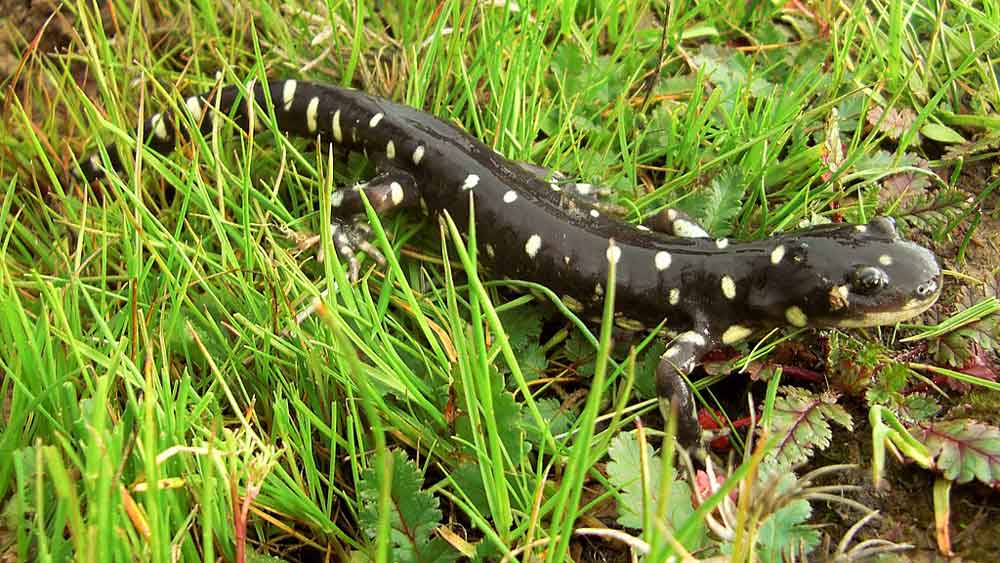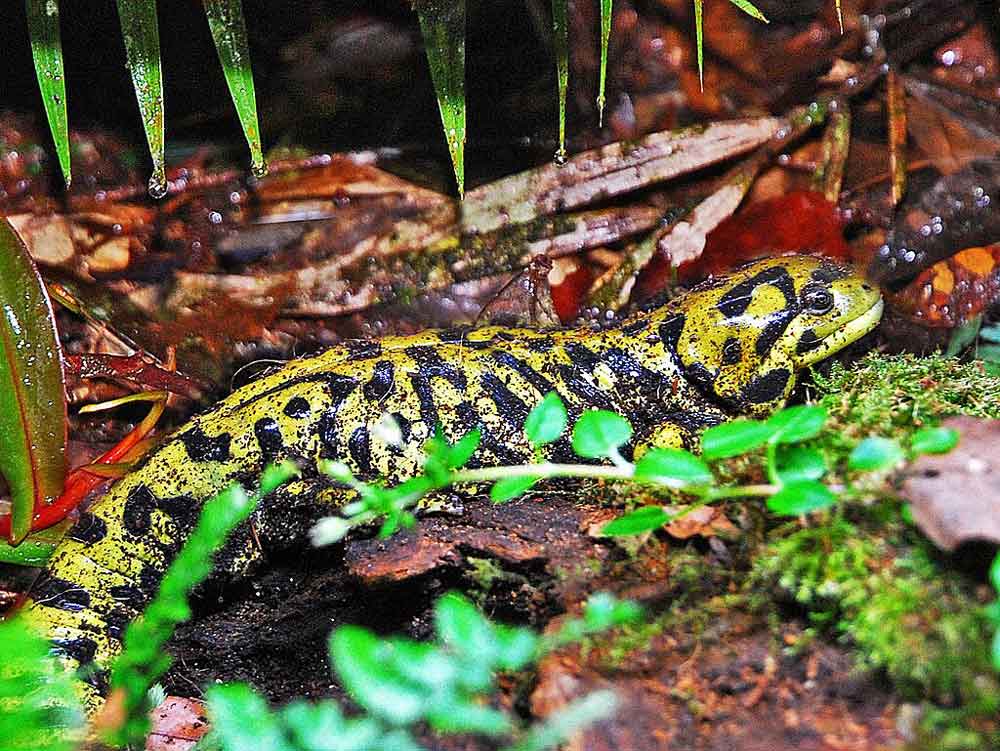Reducing the hydroperiods in zones where the hybrid salamanders were dominant led to population collapse.
The native California tiger salamander (Ambystoma californiense) has been negatively affected by the invasive barred tiger salamander (Ambystoma mavortium) in its native regions and researchers believe that extended hydroperiods (the duration in which a wetland or other soil area stays flooded or water logged during the year) benefit the hybrids of these two species more than the native species.
The researchers have found that agricultural and livestock ponds in which these amphibians use have experienced, by design, longer durations of hydroperiods. This in turn has benefited the non-native species as their offspring are higher in these ponds than the native salamanders.

California tiger salamander. Photo by USFWS
“Hybrids often consume nearly all other species in a pond,” said Robert Cooper, assistant professor in the Department of Fish and Wildlife Conservation and lead author of the study. “By the end of a season, you’re often left with only hybrids.”
The researchers cite in their study that previous studies have confirmed the fact that the extended hydroperiods benefit the hybrids over the native salamanders, and shortened hydroperiods benefited the native California tiger salamander. The shortened period reduced but didn’t eliminate the hybrid advantage, so while the manipulation of the hydroperiod won’t singlehandedly remove the non-native and hybrids from the area of the native species, it could be the most effective management tool available to reduce the prevalence of the non-native and hybrid salamanders.
The three year study involved 18 experimental ponds in which the researchers studied salamander growth and survival. They looked at genetic, ecological and demographic data and took that data to simulate how the effects would change over time in various scenarios. They determined that hydroperiods of long durations (nearly four months) led to larger and more stable populations while durations of less than 90 days led to salamander population collapse regardless if the population was native, hybrid, or invasive.
Hybrid Strategy
The best strategy, the researchers wrote, was keeping ponds in native zones wet longer and reducing the hydroperiods in zones where the hybrid salamanders were dominant. Combining these water management practices with rapid genetic testing will help to target removal and slow the spread of the hybrid salamanders and better protect the natives.
The complete study, “Building genomically-informed demographic models to guide management of invasive hybrids” can be read on the Ecological Applications website.



